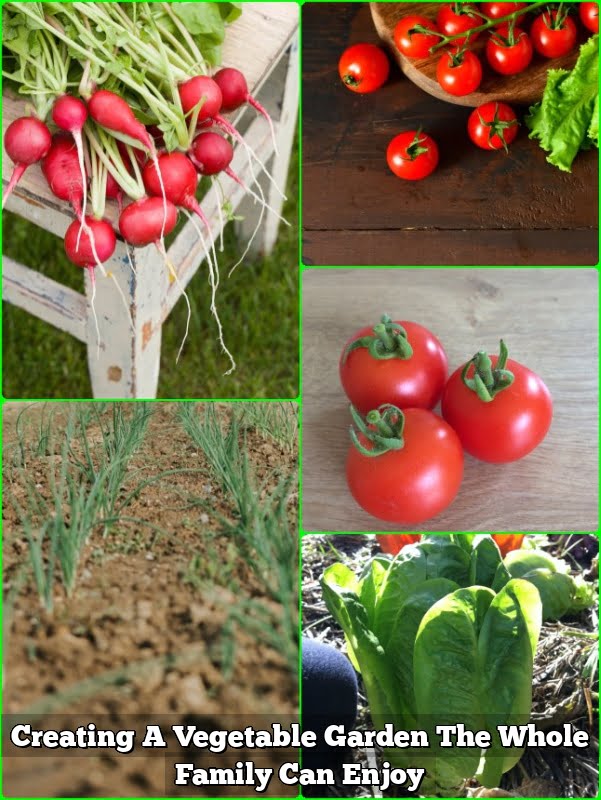Creating A Raised Vegetable Garden
Growing your own vegetables is a great way to get fresh, healthy produce right from your backyard. Not only is it convenient, but it can also be cost-effective. There are a few different ways to create a raised vegetable garden, but the most common is by using wood boards or concrete blocks.
To begin, you’ll need to decide on the size and shape of your garden. The standard size for a raised garden is 4×8 feet, but you can make it any size you like. If you’re using boards, you’ll need to cut them to the desired size and then drill holes in the ends for drainage. If you’re using blocks, you can just start piling them up.
Once you have your foundation in place, it’s time to add the soil. You’ll want to use a soil mix that is specifically designed for vegetables, as this will provide the best results. Add the soil to the garden, leaving a few inches of space at the top for watering.
Now it’s time to plant your vegetables! Choose vegetables that do well in your climate and soil type. Be sure to read the instructions that come with your plants, as some vegetables require more or less sunlight than others.
Water your garden regularly, especially during the first few weeks after planting. Add a layer of mulch to the top of the soil to help retain moisture and prevent weeds.
That’s it! You’re now the proud owner of a raised vegetable garden. Enjoy fresh, homegrown vegetables all summer long!
How To Build A Raised Vegetable Garden
Building a raised vegetable garden is a great way to get started gardening, especially if you don’t have a lot of space. It’s also a great way to garden if you have poor soil, because you can create your own soil mix for your garden.
To build a raised vegetable garden, you’ll need:
– a shovel
– a level
– a tape measure
– a hammer
– a saw
– a drill
– landscape fabric
– staples
– a garden hose
– a drill bit
– a screwdriver
1. Decide on the size and shape of your garden. You’ll want to make sure that your garden is at least 12 inches high, otherwise you’ll have a hard time reaching your vegetables. You can make your garden any shape you like, but a square or rectangle is the easiest to build.
2. Dig a hole in the ground the size of your garden. Use a shovel to turn the soil over, then use a level to make sure the hole is level.
3. Cut the landscape fabric to the size of your garden. Place the fabric in the hole, then use a staple gun to attach it to the soil.
4. Add a layer of gravel to the bottom of the hole. This will help with drainage.
5. Mix together a batch of soil mix for your garden. You’ll need one part compost, one part peat moss, and one part soil.
6. Add the soil mix to the hole, and use a shovel to pack it down.
7. Drill a few holes in the bottom of your garden for drainage.
8. Cut four pieces of lumber to the size of your garden. Use a saw to cut the lumber, then use a drill to make a few holes in each piece.
9. Place the lumber in the garden, then use a screwdriver to attach them together.
10. Add plants to your garden and water them well.
Raised Bed Vegetable Garden Soil
The best soil for a raised bed vegetable garden is a well-drained soil that is high in organic matter. You can create your own raised bed vegetable garden soil by mixing together two parts soil, one part compost, and one part coarse sand.
The soil in a raised bed vegetable garden should be a loamy sand or a sandy loam. A loamy sand has a balance of sand, silt, and clay, while a sandy loam has more sand than silt and clay. The soil in a raised bed vegetable garden should be well-drained, so add a little bit of coarse sand to the mix if your soil is heavy and does not drain well.
The organic matter in the soil will help to improve the soil’s structure, fertility, and drainage. You can add organic matter to the soil by composting your kitchen scraps or by adding organic mulch to the garden. Composted kitchen scraps are a great source of nitrogen, phosphorus, potassium, and other essential nutrients for plants.
A raised bed vegetable garden is a great way to grow vegetables, because you can control the soil conditions and the amount of organic matter in the soil. The soil in a raised bed vegetable garden is also warmer in the spring and cooler in the fall, which can extend the growing season for some vegetables.
Easy Raised Vegetable Garden Plans
Building a vegetable garden is a fun, rewarding, and economical way to provide your family with fresh produce all summer long. But, if you’re like most people, you don’t have the time or expertise to design a garden from scratch. That’s where easy raised vegetable garden plans come in.
Raised vegetable gardens are the perfect way to garden if you have limited space, poor soil, or a busy lifestyle. With just a few simple tools and supplies, you can have a raised bed garden ready to plant in just a few hours.
There are many different types of raised bed gardens, but the simplest and most popular type is a basic raised bed made from lumber. Here’s how to build one:
1. Choose the location for your garden. The best location for a raised bed garden is in a sunny spot with good drainage. If you’re gardening in a colder climate, make sure to choose a spot that will be sunny all day long in the summer.
2. Decide on the size of your garden. The standard size for a raised bed garden is 4’x8’, but you can make it any size you like. Just make sure to buy enough lumber to build the size you want.
3. Cut the lumber to size. Use a saw to cut the lumber to the desired size. If you’re not comfortable using a saw, you can have the lumber pre-cut at your local home improvement store.
4. Assemble the frame of the garden. Use wood screws or nails to assemble the frame of the garden.
5. Add the soil. Add a 2-3” layer of good quality soil to the garden.
6. Plant your vegetables. Plant your vegetables in the soil and water them well.
That’s it! You’ve now got a beautiful raised bed garden that’s ready to harvest. Enjoy fresh produce all summer long!
Termites In Raised Vegetable Garden
Hello, everyone!
I’m here to talk to you about a problem I’ve been having with termites in my raised vegetable garden.
For the last few weeks, I’ve been finding small mounds of dirt in my garden, and when I dug into them, I found that they were full of termites!
I’m not sure how they got into my garden, but I’m guessing that they came in through the cracks in the wooden frame of the garden.
I’ve been trying to get rid of them, but so far I haven’t had much success. I’ve been spraying them with an insecticide, but it doesn’t seem to be doing much.
I’ve also been trying to block off the cracks in the frame, but they keep finding new ways to get in.
I’m not sure what to do about this problem. Has anyone else here had this problem, and if so, what did you do to get rid of the termites?
I would really appreciate any advice you can give me. Thanks!

If you’re looking to get into vegetable gardening, or are just looking for some tips on how to make your current garden better, then you’ve come to the right place! My name is Ethel and I have been gardening for years. In this blog, I’m going to share with you some of my best tips on how to create a successful vegetable garden.





